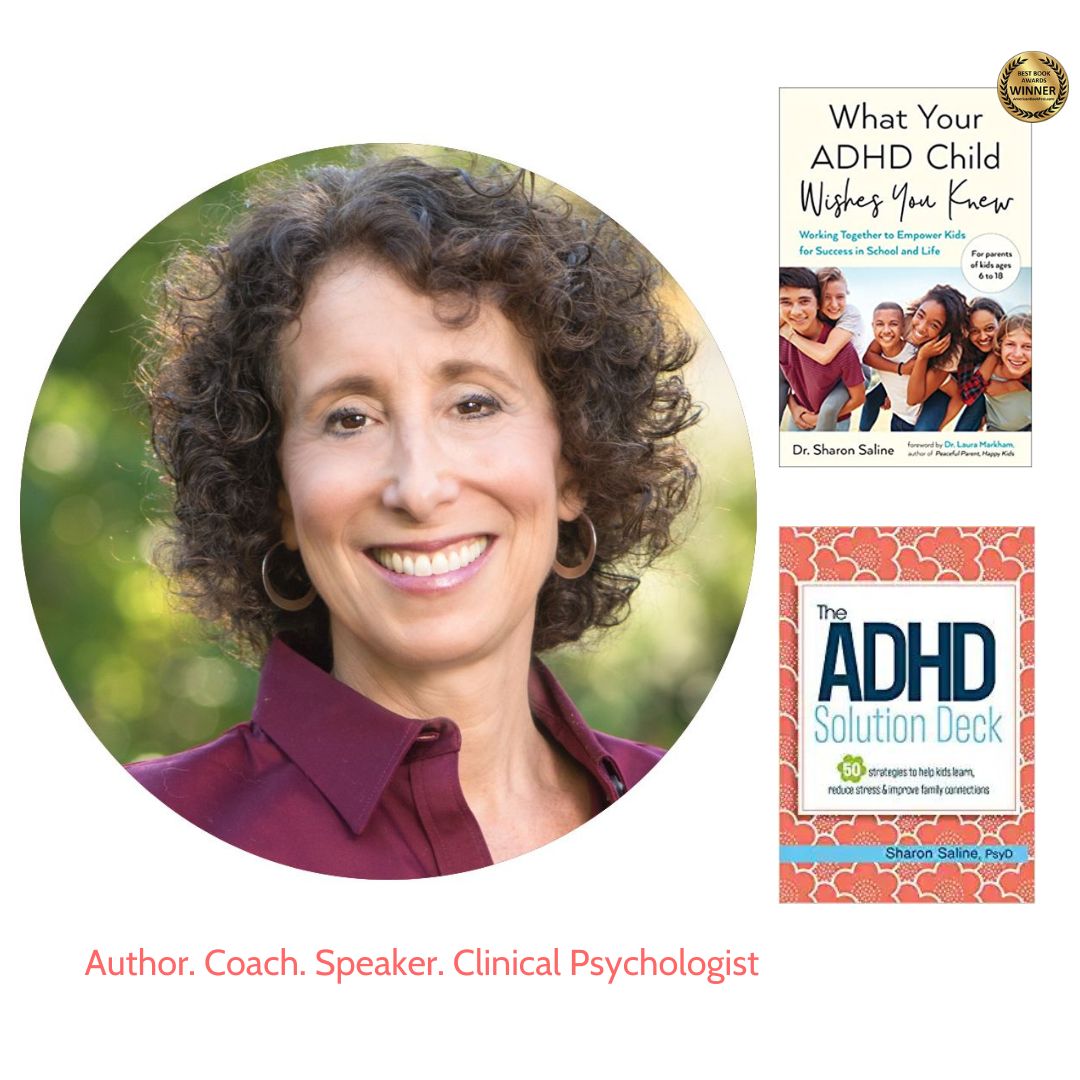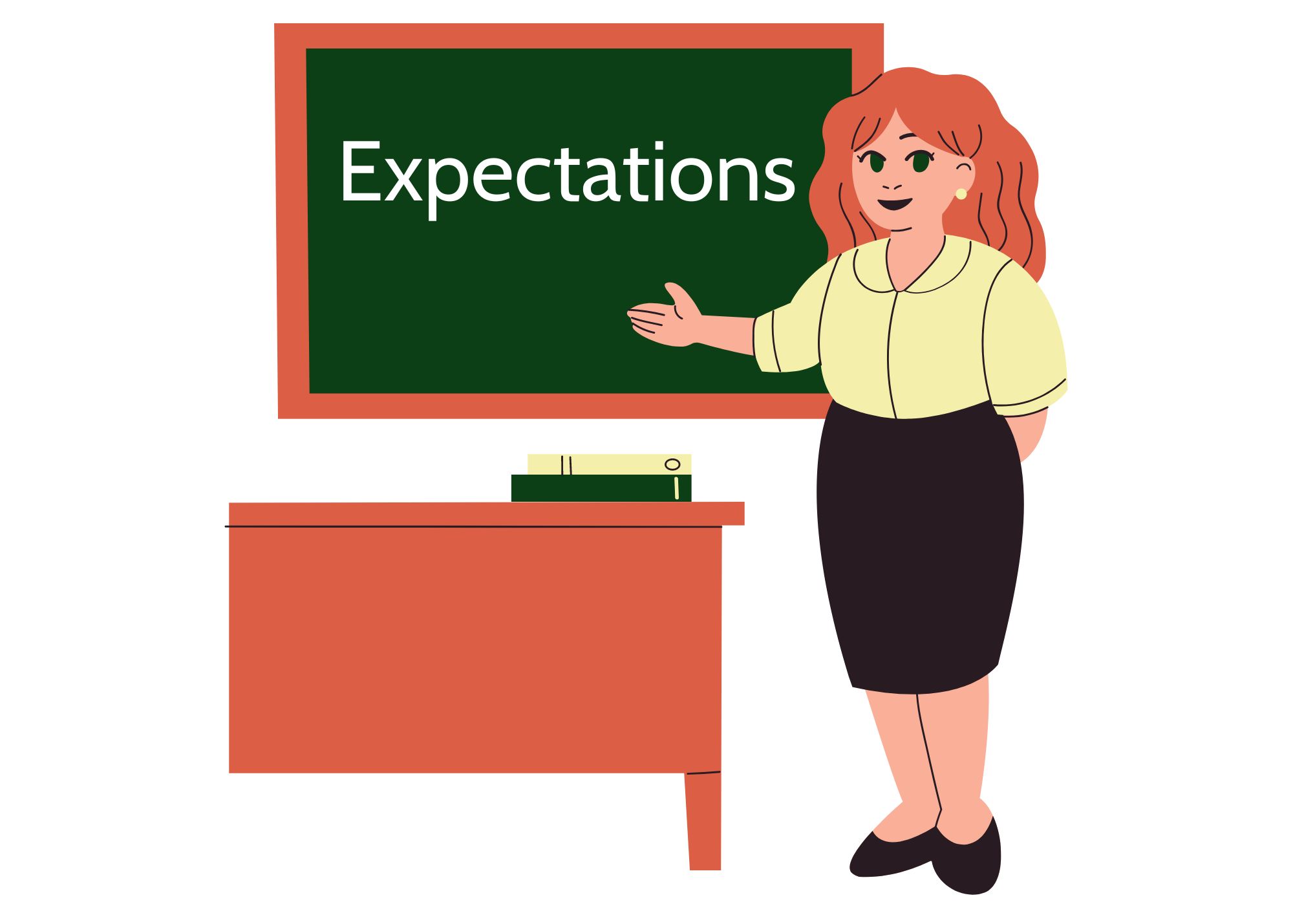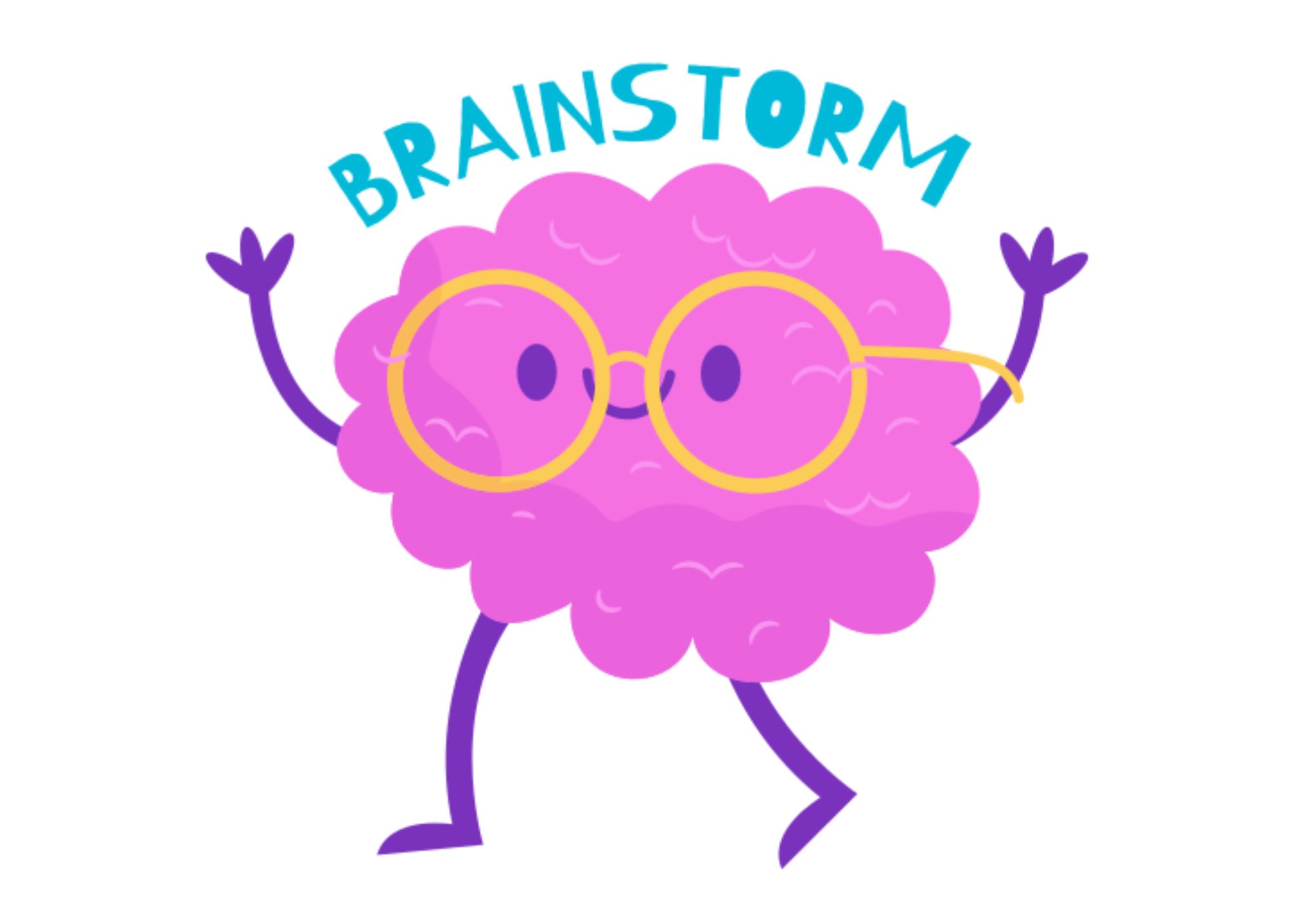



 Parents, Halloween is right around the corner, and most kids are giddily anticipating a fun night of costumes, trick or treating and eating way too much candy. Now is a good time to think about safely enjoying the activities the evening has in store. Halloween safety is especially relevant for kids with ADHD who typically need extra support with impulse control, emotional regulation and pacing. Younger kids will likely need more supervision than usual as they will be more easily activated. Older kids will benefit from a Halloween safety game plan to which you both agree ahead of time so check-ins are predictable and collaborative. Here are 3 practical tips to ensure your child has a delightfully spooky and safe Halloween. (4-minute read)
Parents, Halloween is right around the corner, and most kids are giddily anticipating a fun night of costumes, trick or treating and eating way too much candy. Now is a good time to think about safely enjoying the activities the evening has in store. Halloween safety is especially relevant for kids with ADHD who typically need extra support with impulse control, emotional regulation and pacing. Younger kids will likely need more supervision than usual as they will be more easily activated. Older kids will benefit from a Halloween safety game plan to which you both agree ahead of time so check-ins are predictable and collaborative. Here are 3 practical tips to ensure your child has a delightfully spooky and safe Halloween. (4-minute read)
You know your child best, so choose the age-appropriate Halloween activity that best suits your child. Kids with ADHD often become overwhelmed or over excited in stimulating environments. This can sometimes lead to hyperactivity and other times can cause kids to withdraw. So, consider whether going to a neighbor’s party may be too much for your child. Will trick or treating be better with or without a friend? Perhaps your child will have more fun passing out candy at home instead of being out and about? There is no one right way to celebrate Halloween. Remember, whatever activity you choose, time-box it to avoid your child with ADHD becoming overstimulated. And as always, remain flexible and prepare to make adjustments if plans don’t work out the way you envisioned.
 It’s easy for your child to get swept up in Halloween festivities. There’s a lot going on and it’s all very easy to make quick decisions without thinking them through first. Many kids with ADHD have struggles with impulse control. Remember, kids with ADHD have a hard time with impulse control. When trick or treating, they may run out onto the street without checking for cars, or run off to chase a friend without telling you. Talk with your child about Halloween safety guidelines and expectations before heading out the door. Then, ask for your child to repeat these rules back to you two times. This will ensure that they heard you and the information was transferred to longer term memory. If your child is younger and needs supervision, be ready to keep an extra close eye on them. If they are older and plan on going out with friends, come up with a Halloween safety agreement together in advance. Discuss who they’ll be hanging out with, what their game plan is in terms of where they are intending to go, what time they’ll come home, and the nature of parent contact. Decide on what your child should do if they want to come home early or if they get separated from their peer group. How can they contact you without losing face? It may be a good idea to reach out to other parents to collaborate on additional channels of communication and supervision.
It’s easy for your child to get swept up in Halloween festivities. There’s a lot going on and it’s all very easy to make quick decisions without thinking them through first. Many kids with ADHD have struggles with impulse control. Remember, kids with ADHD have a hard time with impulse control. When trick or treating, they may run out onto the street without checking for cars, or run off to chase a friend without telling you. Talk with your child about Halloween safety guidelines and expectations before heading out the door. Then, ask for your child to repeat these rules back to you two times. This will ensure that they heard you and the information was transferred to longer term memory. If your child is younger and needs supervision, be ready to keep an extra close eye on them. If they are older and plan on going out with friends, come up with a Halloween safety agreement together in advance. Discuss who they’ll be hanging out with, what their game plan is in terms of where they are intending to go, what time they’ll come home, and the nature of parent contact. Decide on what your child should do if they want to come home early or if they get separated from their peer group. How can they contact you without losing face? It may be a good idea to reach out to other parents to collaborate on additional channels of communication and supervision.
 I live in a town of about 35,000 people and I remember those Halloween nights when my daughter was in middle school. She told me which friends were part of her group and what streets they were hoping to hit for the most goodies. By making these choices, she was able to exercise her growing autonomy. But we still needed a safety plan. I contacted a few of those parents and we brainstormed the type and frequency of contact with the group that made us comfortable and what we think our kids would agree to. Then we each talked with our kids about our ideas and emphasized the importance of their cooperation for being able to go out alone on Halloween night. All of the kids agreed to answer the phone or text us when they changed locations and for one parent to check in every 30 to 45 minutes. Before they left, we made sure their phones were on, with loud ring tones and vibration as well. Off they went, we stayed in touch and a good, safe time was had by all.
I live in a town of about 35,000 people and I remember those Halloween nights when my daughter was in middle school. She told me which friends were part of her group and what streets they were hoping to hit for the most goodies. By making these choices, she was able to exercise her growing autonomy. But we still needed a safety plan. I contacted a few of those parents and we brainstormed the type and frequency of contact with the group that made us comfortable and what we think our kids would agree to. Then we each talked with our kids about our ideas and emphasized the importance of their cooperation for being able to go out alone on Halloween night. All of the kids agreed to answer the phone or text us when they changed locations and for one parent to check in every 30 to 45 minutes. Before they left, we made sure their phones were on, with loud ring tones and vibration as well. Off they went, we stayed in touch and a good, safe time was had by all.
For many kids, Halloween is a competitive sport, one where the goal is collecting the most candy in the shortest amount of time. Left to their own devices, kids bolt from one house to the next until they’re exhausted or their treat bag becomes too heavy to carry.
Overstimulation and exhaustion in kids with ADHD are safety risks as they can cause your child to let down their guard and be less careful. Remember, slow and steady wins the race. Rushing through the evening means they may miss out on the fun of being with friends, admiring decorations and enjoying themselves.  Talk with them in advance about monitoring their excitement with steadiness. Brainstorm a few ideas that will help them stay engaged without getting too overwhelmed or distracted early in the night. Maybe saying ‘Hello’ or ‘Thank you’ at each house will give them enough pause to regroup. Some kids collect money for UNICEF or another charity which can also slow things down. Emphasize the importance of savoring their experience rather than racing through it. You can help your child with pacing when it comes to eating their Halloween candy. As tempting as it is to overindulge, eating a little at a time means the candy stash will last longer and the dreaded post-Halloween stomachache will probably be avoided. So, set some guidance around how many pieces of candy your child can have when they get home that night and each day following the holiday. If they like to sneak their candy, consider where it can be stored to minimize this habit and bring it out at a specific time of day.
Talk with them in advance about monitoring their excitement with steadiness. Brainstorm a few ideas that will help them stay engaged without getting too overwhelmed or distracted early in the night. Maybe saying ‘Hello’ or ‘Thank you’ at each house will give them enough pause to regroup. Some kids collect money for UNICEF or another charity which can also slow things down. Emphasize the importance of savoring their experience rather than racing through it. You can help your child with pacing when it comes to eating their Halloween candy. As tempting as it is to overindulge, eating a little at a time means the candy stash will last longer and the dreaded post-Halloween stomachache will probably be avoided. So, set some guidance around how many pieces of candy your child can have when they get home that night and each day following the holiday. If they like to sneak their candy, consider where it can be stored to minimize this habit and bring it out at a specific time of day.
Some schools and dentists collect candy donations. Encourage your child to give away some of their candy as an act of kindness and generosity toward others. Some families have their kids swap some of their candy for a toy or activity. This way the child still gets to have fun but without all that sugar. Talk with your child and come up with your own family tradition for excess treats. However you chose to celebrate, remember have fun and make fun-filled memories. I wish you and your family an enjoyable and safe Halloween! 
Follow me on social media: YouTube, Facebook, Twitter, and Instagram.
Invite Me to Speak | Join A Group | Newsletter | Read my blog
Sign-up for my newsletter today and receive 10% off!




 Now that the school year is in full swing, I’ve noticed that more parents are sharing how much their kids with ADHD dislike school. Neurodivergent children and teens with ADHD, ASD, a learning disability, or other mental health issues work hard to hold it together during the academic day. Various teaching styles that may not make sense for their brains, long periods sitting at desks, complicated peer interactions, and constant demands on their very real executive functioning challenges frequently make the school the most complex area of functioning for alternative learners. When they arrive home desperately needing time to recover, process what’s happened that day, or zone out, they face homework, after-school activities, chores, or a part-time job. It may seem too much, but tempers rise, meltdowns ensue and the dislike of school grows even more. But what can you do to offer practical, authentic, caring support to shift this mindset for your kids with ADHD from “I hate school!” to “I’m Ready!”?
Now that the school year is in full swing, I’ve noticed that more parents are sharing how much their kids with ADHD dislike school. Neurodivergent children and teens with ADHD, ASD, a learning disability, or other mental health issues work hard to hold it together during the academic day. Various teaching styles that may not make sense for their brains, long periods sitting at desks, complicated peer interactions, and constant demands on their very real executive functioning challenges frequently make the school the most complex area of functioning for alternative learners. When they arrive home desperately needing time to recover, process what’s happened that day, or zone out, they face homework, after-school activities, chores, or a part-time job. It may seem too much, but tempers rise, meltdowns ensue and the dislike of school grows even more. But what can you do to offer practical, authentic, caring support to shift this mindset for your kids with ADHD from “I hate school!” to “I’m Ready!”?
The key to providing effective and caring school support for your kids with ADHD and more begins with recognizing the problem and shifting their mindset with a sustainable solution. Included below are four frequently mentioned problems by parents and solutions by experts that work.
 Since school uses all executive functioning skills throughout the day, kids often arrive home mentally and physically depleted. Remember, they’ve been asked repeatedly to adapt and perform at neurotypical levels, which may or may not work for their unique brains. Many of these alternative learners could have unusual strengths in some areas but not in others and are still expected to perform in all areas at the level of their strongest interests and abilities. Some students struggle because of unidentified learning disabilities as well. These standards put extra, unnecessary stress on children and teens and contribute to negative attitudes and lower self-esteem. In addition, they may feel misunderstood by their teachers and harbor frustration that nobody seems to understand enough to help them.
Since school uses all executive functioning skills throughout the day, kids often arrive home mentally and physically depleted. Remember, they’ve been asked repeatedly to adapt and perform at neurotypical levels, which may or may not work for their unique brains. Many of these alternative learners could have unusual strengths in some areas but not in others and are still expected to perform in all areas at the level of their strongest interests and abilities. Some students struggle because of unidentified learning disabilities as well. These standards put extra, unnecessary stress on children and teens and contribute to negative attitudes and lower self-esteem. In addition, they may feel misunderstood by their teachers and harbor frustration that nobody seems to understand enough to help them.
We want to make sure mandated services are in place for them if they qualify. Next, in conversation with your student, teachers, or guidance counselors, create two sets of expectations. The first set should be related to an interest, talent, or strength–something your child enjoys and does well. Find out what goal they would like to put out for themselves. Also, what do the adults think the youngster can handle? Then agree with this, write it down, and check in weekly about it.  Second, they should be related to a challenging area that your child either doesn’t enjoy or struggles with. What goals would be realistic to set here? For instance, if your teen loves math and takes an advanced math class, what are their hopes for their performance in this subject? Also, if they have dyslexia and English is tough, figure out what would be appropriate for this class to be effective. Things don’t have to be the same, but the process of talking about issues and making doable plans works best when it is consistent. The goal is to develop a sense of progress to encourage effort and nurture strengths while shoring up challenges.
Second, they should be related to a challenging area that your child either doesn’t enjoy or struggles with. What goals would be realistic to set here? For instance, if your teen loves math and takes an advanced math class, what are their hopes for their performance in this subject? Also, if they have dyslexia and English is tough, figure out what would be appropriate for this class to be effective. Things don’t have to be the same, but the process of talking about issues and making doable plans works best when it is consistent. The goal is to develop a sense of progress to encourage effort and nurture strengths while shoring up challenges.
 In the book ADHD and Asperger’s syndrome in smart kids and adults (2022), Dr. Thomas Brown talks about the central mystery of ADHD as fluctuating motivation and attention based on varying interests. It’s confusing to kids, teens, and adults with ADHD and those who live, teach or work with them why someone can concentrate on something like playing the guitar for hours but not be able to focus on a twenty-minute assignment for science. Motivation based on a strong personal interest or the belief that something terrible will happen imminently seems to get folks going, but not always. Jules, age 15, says: “I feel like if I’m interested in a subject, I’m good at it, but if I’m not, it’s not as good. If I’m not interested in it, I’m spacing out and I’m just not paying as much attention. It depends on what mood I’m in.” Jules is aware of how interest affects his concentration, but if something is boring or he’s not in the right mood, he struggles with doing it.
In the book ADHD and Asperger’s syndrome in smart kids and adults (2022), Dr. Thomas Brown talks about the central mystery of ADHD as fluctuating motivation and attention based on varying interests. It’s confusing to kids, teens, and adults with ADHD and those who live, teach or work with them why someone can concentrate on something like playing the guitar for hours but not be able to focus on a twenty-minute assignment for science. Motivation based on a strong personal interest or the belief that something terrible will happen imminently seems to get folks going, but not always. Jules, age 15, says: “I feel like if I’m interested in a subject, I’m good at it, but if I’m not, it’s not as good. If I’m not interested in it, I’m spacing out and I’m just not paying as much attention. It depends on what mood I’m in.” Jules is aware of how interest affects his concentration, but if something is boring or he’s not in the right mood, he struggles with doing it.
 Solution #2: Nurturing motivation depends on identifying interests and relying on extrinsic and intrinsic incentives.
Solution #2: Nurturing motivation depends on identifying interests and relying on extrinsic and intrinsic incentives. Extrinsic motivation is an outside responsibility or reward that depends on achieving a goal. You pay for your train ticket in advance, so you have a seat; you turn in your history paper on time, so you don’t receive a poor grade. Intrinsic motivation means striving toward a goal for personal satisfaction or accomplishment. Ex. You decide to ride your bike for ten miles instead of five; you make the next level on a computer game. Intrinsic motivation drives us naturally because we are engaged and happy in what we are doing. But, when there is no clear or immediate satisfaction from a task, it takes kids (and adults) with ADHD longer to do anything. They prefer to avoid it and do something they enjoy first, never getting into dreaded activity. To change this pattern means putting the Have-Tos before the Want-Tos. Many neurodivergent kids need to learn how to set up effective incentives that matter to them to tackle the unpleasant stuff. It also helps to break undesirable tasks into small pieces, so there’s a sense of accomplishment as you tick things off.
 Many neurodivergent kids struggle with making and keeping friends. They may feel awkward at the lunch table, during recess, or speaking in front of others. Verbal or visual cues and misread body language may be missed. Or they may often notice that other kids seem to display ease with each other they don’t possess. School is the environment where the social world is on full display. It’s the crucible for launching friendships, changing relationship dynamics, constant comparisons, and experiencing bullying. Managing social dynamics and academic challenges can overwhelm the already taxed executive functioning skills of neurodivergent children and teens. In addition, many neurodivergent children and teens feel ashamed that they can’t ‘be like everyone else’ and engage more naturally with other people. They tend to hide what’s happening inside and may also lack the language to discuss their true feelings.
Many neurodivergent kids struggle with making and keeping friends. They may feel awkward at the lunch table, during recess, or speaking in front of others. Verbal or visual cues and misread body language may be missed. Or they may often notice that other kids seem to display ease with each other they don’t possess. School is the environment where the social world is on full display. It’s the crucible for launching friendships, changing relationship dynamics, constant comparisons, and experiencing bullying. Managing social dynamics and academic challenges can overwhelm the already taxed executive functioning skills of neurodivergent children and teens. In addition, many neurodivergent children and teens feel ashamed that they can’t ‘be like everyone else’ and engage more naturally with other people. They tend to hide what’s happening inside and may also lack the language to discuss their true feelings.
Outside-the-box thinkers compare themselves to others and often find themselves lacking. But, the creative, unique ways alternative learners see the world can also result in leadership opportunities and peer respect. Building social skills is critical for developing self-confidence and increased comfort with interpersonal interactions.  Help your neurodivergent child or teen by brainstorming and practicing conversational tools at home, creating a few stock responses to common questions, and formulating an exit strategy when they feel uncomfortable. I taught one of my tween clients to say, “That’s a good question. Can I get back to you?” when she didn’t know what to say to someone. Instead of walking away with no response and alienating the other person, she now had a tool that worked in various uncertain situations. This made her feel better about herself, and nobody was annoyed with her. Even saying phrases in the hallway, such as “Hey, nice to see you” or “What’s up?” can help kids feel more comfortable. Determine the right amount of involvement in the social life of your child. As parents, we are acutely sensitive and reactive to any social challenges our kids may be experiencing. When there’s an issue, listen instead of giving advice and work with them to find solutions instead of giving advice.
Help your neurodivergent child or teen by brainstorming and practicing conversational tools at home, creating a few stock responses to common questions, and formulating an exit strategy when they feel uncomfortable. I taught one of my tween clients to say, “That’s a good question. Can I get back to you?” when she didn’t know what to say to someone. Instead of walking away with no response and alienating the other person, she now had a tool that worked in various uncertain situations. This made her feel better about herself, and nobody was annoyed with her. Even saying phrases in the hallway, such as “Hey, nice to see you” or “What’s up?” can help kids feel more comfortable. Determine the right amount of involvement in the social life of your child. As parents, we are acutely sensitive and reactive to any social challenges our kids may be experiencing. When there’s an issue, listen instead of giving advice and work with them to find solutions instead of giving advice.
 Neurodivergent children and teens tend to be concrete thinkers with fixed mindsets as a result of experiencing constant negative feedback about themselves. Maybe they struggle with verbal impulse control or recall, or emotional regulation. Many kids and teens with ADHD aren’t necessarily aware of doing something offensive until they receive a negative response. This increases their worry about messing up again in the future and lowers their confidence in changing such behaviors. In a fixed mindset, people believe that their basic qualities, like intelligence or talents, are static traits that can’t improve. Then they are overly focused on an outcome, disappointed if they can’t achieve the perceived outcome. Perfectionism, procrastination, and low self-worth are all related to fixed mindsets. Fixed mindsets lead a student to give up on something quickly, sometimes even before trying. They don’t see the possibility of a different outcome. Of course, fixed mindsets affect academic, athletic, or extracurricular performance and social relationships.
Neurodivergent children and teens tend to be concrete thinkers with fixed mindsets as a result of experiencing constant negative feedback about themselves. Maybe they struggle with verbal impulse control or recall, or emotional regulation. Many kids and teens with ADHD aren’t necessarily aware of doing something offensive until they receive a negative response. This increases their worry about messing up again in the future and lowers their confidence in changing such behaviors. In a fixed mindset, people believe that their basic qualities, like intelligence or talents, are static traits that can’t improve. Then they are overly focused on an outcome, disappointed if they can’t achieve the perceived outcome. Perfectionism, procrastination, and low self-worth are all related to fixed mindsets. Fixed mindsets lead a student to give up on something quickly, sometimes even before trying. They don’t see the possibility of a different outcome. Of course, fixed mindsets affect academic, athletic, or extracurricular performance and social relationships.
Your kids need help counterbalancing the negative things they tell and hear from others. A growth mindset refers to the belief that we can change and grow from our mistakes. Rather than something we should avoid or be afraid of, are a natural part of living. This mindset is crucial for alternative learners. They realize they can regroup after trying something that doesn’t work instead of blaming or shaming themselves. When we try something, we risk failure; when we avoid something, we ensure it. When kids value the process of trial-and-learning, they become aware that learning and intelligence grow with time and experience. This mindset counters the failure mentality many alternative learners harbor and nurtures essential resilience instead. As Dahlia, age 12, says, “Hopefully, this works. If not, I will have to find a new way to do it, to be brave. It’s hard sometimes, but there’s always a way to pick yourself up.”

Follow me on social media: YouTube, Facebook, Twitter, and Instagram.
Invite Me to Speak | Join A Group | Newsletter | Read my blog
Sign-up for my newsletter today and receive 10% off!

https://www.youtube.com/watch?v=GM7QbJFNMKc
 Social anxiety and rejection sensitive dysphoria cause people with ADHD to feel isolated, self-conscious, and stressed. Here are expert tips on how to improve social skills and alleviate your social anxiety.
Social anxiety and rejection sensitive dysphoria cause people with ADHD to feel isolated, self-conscious, and stressed. Here are expert tips on how to improve social skills and alleviate your social anxiety.
https://www.additudemag.com/social-anxiety-treatment-rejection-sensitive-dysphoria-adhd/ 
Notifications